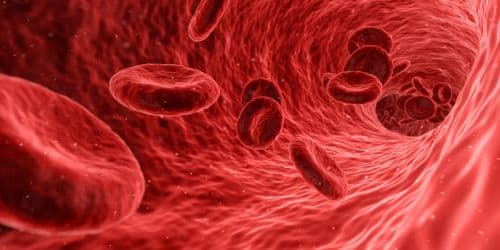New microfluidic device generates high-quality platelet-rich plasma
Researchers at the University of the Basque Country have developed a groundbreaking microfluidic device that efficiently extracts platelet-rich plasma (PRP) from whole blood using gravity sedimentation, achieving significantly lower platelet activation rates than conventional centrifugation methods whilst maintaining high purity levels.
A revolutionary microfluidic device developed at the University of the Basque Country promises to transform platelet-rich plasma (PRP) extraction by delivering superior quality with minimal platelet activation. The innovative system, detailed in Lab on a Chip, represents a significant advancement in regenerative medicine technology.
Novel multi-trench design overcomes processing limitations
The device addresses critical limitations in current sedimentation-based technologies through its innovative multi-trench architecture. Unlike existing methods that rely on single sedimentation trenches – limiting plasma yield and processing speed – this system incorporates multiple rectangular, circular, or large trenches interconnected by microfluidic channels.
“We realised that our device not only separated the plasma, but also obtained very high-quality PRP, with functional and minimally activated platelets,” explained Ikerbasque Research Professor Lourdes Basabe, the study’s senior author.
The system processes 1 mL of whole blood in 40 minutes, yielding approximately 250 μL of PRP with at least a two-fold increase in platelet concentration compared to baseline levels. This represents a substantial improvement over traditional single-trench devices whilst maintaining the high purity levels that gravity sedimentation systems achieve.
Superior platelet preservation through passive separation
The research demonstrates remarkable platelet preservation capabilities, with only 8.2% of platelets activated post-processing compared to 31% with conventional centrifugation. The authors attribute this to the device’s passive operation, which relies solely on gravity sedimentation rather than mechanical forces that can damage cellular components.
Flow simulations optimised shear rates to improve sedimentation whilst preventing platelet activation. The team determined that maintaining shear rates below 50 s⁻¹ allows red blood cell aggregation through the Rouleaux effect, enhancing separation efficiency whilst preserving platelet integrity.
“The device effectively removes red and white blood cells with purities of 98% and 96%, respectively,” the authors report in their conclusions. This exceptional purity eliminates contamination concerns that often complicate PRP applications in clinical settings.
Cost-effective fabrication enables widespread adoption
The device’s construction from laser-cut acrylic layers bonded with pressure-sensitive adhesives offers significant manufacturing advantages. This approach provides a cost-effective alternative to complex fabrication processes typically required for microfluidic devices, potentially enabling mass production and clinical deployment.
A key innovation involves using hydrophilic pressure-sensitive adhesive at trench bottoms to prevent bubble formation – a common problem in microfluidic sedimentation devices. This simple yet effective solution eliminates the need for complex degassing systems or specialised materials.
Lead author Dr Pablo Enrique Guevara-Pantoja, a post-PhD researcher supported by a prestigious Marie Curie COFUND grant, brings extensive international expertise in microfluidics and biomedical engineering to the project.
Clinical applications
The device produces PRP with platelet concentrations of approximately 400,000 platelets per microlitre, meeting clinical requirements for various therapeutic applications. Whilst higher concentrations are preferred for orthopaedic and dental applications, this level proves effective for ophthalmology, aesthetic medicine, and superficial wound healing.
Importantly, the system distinguishes between leukocyte-rich PRP (LR-PRP) and leukocyte-poor PRP (LP-PRP) depending on device configuration. The large-trench design significantly reduces white blood cell concentration compared to smaller trench variants, offering therapeutic flexibility based on specific clinical requirements.
Addressing regenerative medicine challenges
This development addresses a critical gap in regenerative medicine technology by providing a portable, cost-effective system for generating high-quality PRP without requiring specialised laboratory facilities. The closed-system operation minimises contamination risk whilst eliminating the need for sterile operating environments.
The technology has been protected by Spanish patent, with researchers actively seeking clinical, industrial, and investment partnerships to scale production and facilitate market introduction. The team envisions applications ranging from resource-limited clinical settings to personalised treatments and home healthcare scenarios.
Future developments
Whilst currently designed for 1 mL blood processing, the researchers suggest the system could be scaled for larger volumes through parallel device integration or increased trench numbers. The authors conclude: “Our microfluidic device provides a straightforward solution for efficiently obtaining high-quality PRP, with advantages in fabrication simplicity, scalability, and operational adaptability.”
The research represents the culmination of over a decade of Lab-on-a-Chip technology development by the Microfluidics Cluster at UPV/EHU, demonstrating how fundamental research in microfluidics can translate into practical clinical solutions.
This breakthrough offers significant promise for advancing regenerative medicine applications whilst reducing costs and improving accessibility to high-quality PRP therapy across diverse healthcare settings.
Reference
Guevara-Pantoja, P. E., Alvarez-Braña, Y., Mercader-Ruiz, J., et. al. (2025). A microfluidic device for passive separation of platelet-rich plasma from whole blood. Lab on a Chip. https://doi.org/10.1039/d5lc00362h


